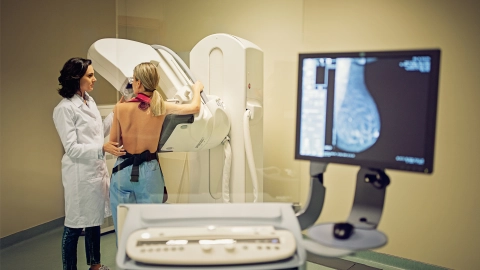ICD-Code C53.8: Malignant neoplasm: Overlapping lesion of cervix uteri
You have cancer in the neck of your uterus (womb).
The tissue in the body is made up of cells. With cancer, the cells multiply uncontrollably, which leads to a malignant neoplasm (abnormal growth of tissue) developing. The cancer cells can destroy the healthy tissue and spread throughout the body.
The uterus or womb sits in the pelvis and is pear-shaped. The narrower part extends downward into the vagina and is called the cervix. When a woman is pregnant, the child grows in her uterus. Your cancer is in several sections of the cervix.
Not every cancer is the same. There are cancers that develop quickly. You may then quickly feel seriously ill. But there are also cancers that progress slowly. You may then feel generally unwell or weak, or even have no symptoms at all to start with. You may have bleeding with cervical cancer, especially after sex. There may also be a vaginal discharge. The skin of the vagina can appear very inflamed and produce open wounds.
Please note: This ICD code may also derive from the ICD-O system. If this is the case, there are usually additional letters and numbers in addition to the code. It starts with the letter M, followed by 4 digits and then a slash. There is another digit after the slash.
If it is an ICD-O code, then this does not describe a malignant cancer in all cases. The last digit after the slash gives you more detailed information about this:
- /0 – The tumor is benign. Cells in a tissue multiply uncontrollably. However, they are not destroying the surrounding tissue and are also not spreading throughout the body.
- /1 – It is not known for sure whether the tumor is benign or malignant.
- /2 – It is an early form of cancer, a precancerous stage where the cells are altered and multiply uncontrollably. However, they are not yet spreading beyond a certain margin and cannot spread to other organs either.
- /3 – It is a malignant cancer. The cells in the affected tissue are altered and multiply uncontrollably. They can destroy the surrounding tissue and spread throughout the body.
- /6 – It is a metastasis. Cancer cells have spread from the originally affected site to a different site in the body and have further multiplied there.
- /9 – It is either a malignant cancer or a metastasis. The cells in the affected tissue are altered and multiply uncontrollably. However, it is impossible to say whether these cells derive originally from the affected site or have spread there from a different site in the body.
Additional indicator
On medical documents, the ICD code is often appended by letters that indicate the diagnostic certainty or the affected side of the body.
- G: Confirmed diagnosis
- V: Tentative diagnosis
- Z: Condition after
- A: Excluded diagnosis
- L: Left
- R: Right
- B: Both sides
Further information
Source
Provided by the non-profit organization “Was hab’ ich?” gemeinnützige GmbH on behalf of the Federal Ministry of Health (BMG).



